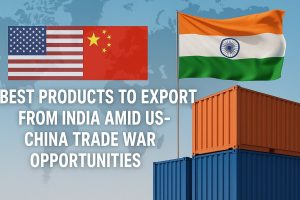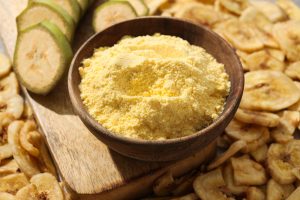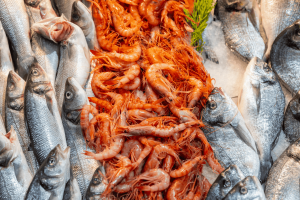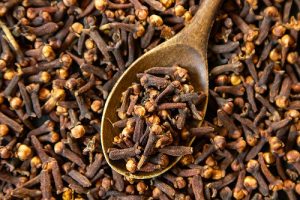Indonesia has many superlatives to its credit – The Land of Thousand islands, for its 17,000+ islands; the Emerald of equator, for its lush greenery and rainforests (one of the three major rainforests in the world) and also one of the most densely populated nations on the entire planet. But in recent years, Indonesia has acquired the status of one of the world’s fastest growing economies. After a dismal showing in 2019, recording a trade deficit of $3.20 Billion, Indonesia bounced back in the most surprising of ways despite the pandemic and finished the year with a trade surplus of $21.68 Billion, a feat that it accomplished for the second straight year with an improved surplus of $35.34 Billion, thanks to the impressive exports totaling a whopping value of $228.2 Billion.
In this blog, we will take a closer look at the export strategies of the Indonesian government, the commodities that helped this country turn its deficit into a surplus and the export markets which helped Indonesia to such an enormous success. We will also learn about the possible investments Indonesia plans to make to bring the imports down even further.
Indonesia is a country rich in natural resources and by virtue of some of the most valuable and in-demand metals, the nation has joined leading export nations of the world in provisioning important raw materials including nickel, tin, bauxite, copper, aluminum and of course, gold. Some of the leading importers of Indonesian exports are China (23.5% of the global total), United States of America (11.2%), Japan (7.8%), India (5.8%), Malaysia (5.2%), Singapore (4.9%), Philippines (3.75%), South Korea (3.68%), Thailand (3.04%), Taiwan (3%), Vietnam (2.9%) and the Netherlands (2%)

Not a member? Create your FREE profile today!
Out of the total exports in 2021, 26.6% export value was contributed by three main export commodities – Coal, Crude Palm Oil and Petroleum gas. Surprisingly, President Joko Widodo and his cabinet decided to impose export bans on one or two of these widely exported commodities in the last 6 months alone. While most of January 2022 saw an export ban on thermal coal, which lasted a month, the earlier ban on nickel ore, chief raw material in the production of steel and electric vehicle batteries, means Indonesia’s stance is clear. It wants to add value to these natural resources with capable investments in manpower and technology. Tesla’s recent decision to open an EV plant in Indonesia then does not come as a surprise since EU importers are currently unable to import nickel ore from Indonesia for the production of EV batteries, a crucial auto part in the large scale production and use of electric vehicles.
“Indonesia will make a significant leap if we have the courage to industrialize and downstream our natural resources. For decades, we have always exported our raw material and we must stop it. We have discontinued nickel exports. Next year we will stop exporting bauxite. After bauxite, we will stop exporting copper. After copper, we will stop exporting tin. We have added values in our country. We have added values, prices and jobs in our country” Widodo stated, speaking at the 7th anniversary of the Indonesian Solidarity Party.
Most recently, the export ban on palm oil, in circumstances that had crippled the global supply chains of edible oils due to the Russia-Ukraine war already, was widely criticized. While the ban was lifted after a few weeks, the repercussions of the same were felt significantly by Indonesia’s chief palm oil importer – India.
But the ongoing economic strategy involving bans is parallel to the major in-roads Indonesia is making with the export of other commodities that are fetching great prices in the international market.
Rubber and rubber articles, for instance, amounted to 3.1% of the total exports, valued at a whopping $7.1 Billion in 2021. USA, China, Japan, Brazil and Singapore are the leading importers of Indonesian rubber and right behind Thailand, Indonesia is the second largest exporter of natural rubber.
Animal/Vegetable Fats, oil and wax are part of another product category that is reaping enormous benefits to this South East Asian giant. With exports totaling an impressive $32.5 Billion in 2021, a 58.5% increase since 2020, Indonesian suppliers and exporters are rejoicing in the increased production and exports. Chief importers of Indonesia’s Animal/vegetable fat and oil are China, South Korea, Netherlands, Singapore and Malaysia.
Stainless Steel, valued at $3.7 Billion in exports as a result of Indonesia’s export ban of nickel ore, chief constituent in steel production helped Indonesia top the coveted order of leading exporters of stainless steel in the world in 2021. Total exports were also an impressive 128.5% hike over the previous year in terms of total export value. Indonesia is also set to replace India as the second leading producer of steel in the world with China still leading the pack. China imported plenty of stainless steel ingots from Indonesia, followed by other importing nations like Italy, United States & Turkey.
Palm Oil has been a crown jewel for Indonesian exports for some time now but Indonesia, the largest producer of palm oil, did not acquire the status of top exporter all that easily. Until 2018, it was the neighboring Malaysia that held the status. Some would say that it was just a matter of time, but to bring up the commodity in the value chain such that not just crude palm oil but also refined oil exports add to the share in total export dollar value is a considerable feat. As Indonesia continues to plant more & more palm trees, the need for fertilizers and agrochemicals, primarily supplied by Russia and Ukraine will cause problems for Indonesian plantation owners who are trying to bring the cost down to increase profits.
On the competition front, Malaysia does have a major USP – sustainable palm oil. Indonesia has been widely criticized globally for allotting most of the farming land to the plantations of palm oil. As if this tampering of the ecosystem was not enough that Indonesia began deforestation of Sumatran rainforests to further the palm oil plantations for better output. Amidst such global attention to this chaos, Malaysia’s sustainable palm oil production may work in it finding export markets in Europe and North America where environmentally sustainable export products are a major requirement. As for the export of crude oil, Indonesia’s major importers – India & China, will soon find themselves forced to put the sustainability clause if they wish to find European & American buyers.
Indonesia has an export ban roadmap set for the next two years for which the Indonesian government cites the reason as its commitment to industrialization by curbing the export of raw commodities. Perhaps the formula is working well for Indonesia who registered an impressive 5.01% GDP growth in the first quarter of 2022. In addition, the rising exports of wood, footwear & chemical goods have resulted in the nation securing a trade surplus for the second straight year.
In macroeconomic terms, Indonesia’s total exported goods represent 6.4% of its overall Gross Domestic Product for 2021 which is a significant rise when compared to 4.9% for 2020. The nation’s economy is already larger than one could imagine, with this South East Asian powerhouse already leading the way in exports of multitude of commodities, all the while vying to add value to all raw commodities to reap maximum benefits upon exports.
With everything going its way, the Emerald of Equator is all set to shine bright on the global economic horizon.












